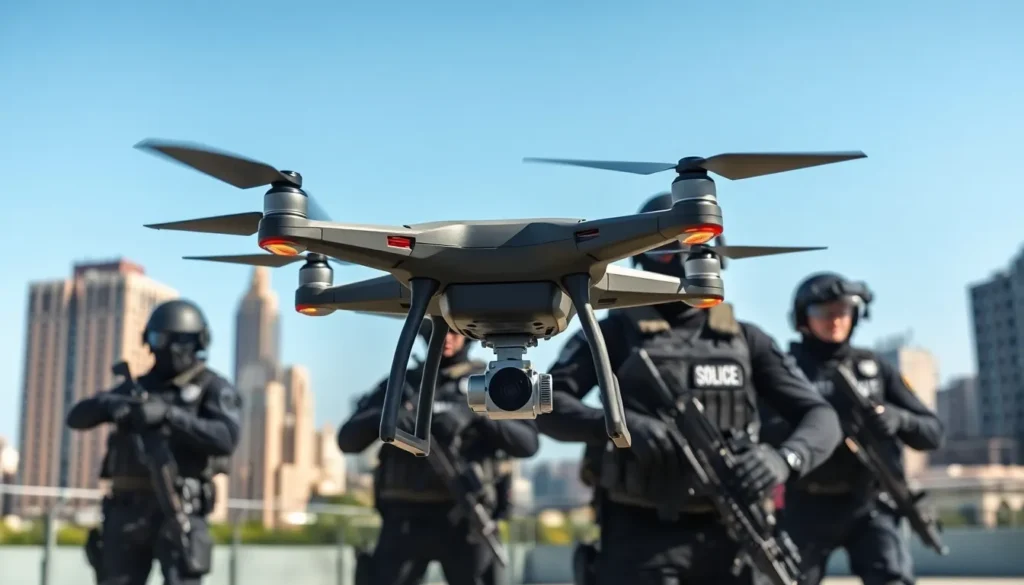In a world where technology seems to shrink by the day, think of smartphones becoming smartwatches, it’s no surprise that wearables have become the must-have gadgets of our era. But what does “wearables” even mean, and why should you care? Sure, they look sleek on your wrist or in your pocket, but there’s so much more beneath that polished surface. From tracking your daily step count to making phone calls right from your sleeve, wearables are revolutionizing how we interact with technology. So, buckle up as we jump into the realm of wearables and uncover not just their meaning, but their undeniable importance in today’s tech-savvy world.
Table of Contents
ToggleWhat Are Wearables?

Wearables refer to a category of technology that is worn directly on the body, often designed to monitor health metrics or enhance connectivity. These gadgets often take the form of wristbands, smartwatches, smart glasses, or even clothing integrated with sensors. The goal? To provide users with real-time data about their health, surroundings, or even their personal connections, all without needing to pull out a smartphone.
In essence, wearables connect the human body to the digital world, seamlessly merging physical activity with technological sophistication. When you see someone checking their watch or adjusting their fitness band mid-jog, they’re tapped into a world of information that previously required separate devices or manual tracking. All it takes is a quick glance to gain instant feedback on their performance or even their heart rate. Clearly, wearables are much more than just fancy accessories: they’re a new way of life.
Types of Wearable Devices
Wearable devices come in various flavors, catering to diverse needs and preferences. Here’s a closer look at some of the most common types:
Fitness Trackers
These are the simplest form of wearables, equipped with sensors to monitor steps, calories burned, and even sleep patterns. They’re perfect for those looking to enhance their fitness routines or simply stay active.
Smartwatches
Smartwatches take fitness tracking up a notch by integrating more features like notifications, music control, and mobile apps. Not only do they keep tabs on your health, but they also connect you to your digital life.
Smart Glasses
These high-tech spectacles can project information directly into your field of vision. They have applications in fields ranging from gaming to healthcare, providing hands-free data access for users.
Wearable Health Monitors
From advanced heart rate monitors to devices that track glucose levels for diabetics, wearables focusing on health monitoring are becoming essential tools for individuals managing chronic conditions.
Smart Clothing
Imagine shirts that can measure your heart rate or socks that track your steps. Smart clothing is still in its infancy but promises great potential for integrating tech into everyday wear.
The Technology Behind Wearables
The backbone of these devices consists of sensors that collect data, Bluetooth and Wi-Fi for connectivity, and software applications to interpret and display that information. Sensor technologies like accelerometers, gyroscopes, and heart rate monitors are key players in this gadget game, enabling real-time tracking and analytics.
Applications of Wearables in Various Industries
Wearable technology isn’t just for fitness enthusiasts: it has a plethora of applications across various industries.
Impact of Wearables on Health and Fitness
In healthcare, wearables have emerged as crucial tools for both patients and healthcare providers. They help continuous monitoring of vital signs, promoting proactive care. Consider the implications for geriatric patients or those with chronic diseases: wearables can alert caregivers if something goes wrong.
In fitness, wearables have transformed how individuals set and achieve their wellness goals. Data-driven insights from wearables help users refine their training, leading to better outcomes and, eventually, healthier lives. And let’s face it, who wouldn’t want their smartwatch to cheer them on during that last mile?
Wearables in Everyday Life: Enhancing Convenience and Connectivity
But the magic of wearables isn’t confined to specialized fields. In everyday life, they enhance convenience and connectivity.
The Future of Wearable Technology
Wearable technology is still evolving, and the horizon looks incredibly promising. Future innovations might include:
- Advanced Health Monitoring: Imagine wearables that can predict health issues before they arise.
- Integration with Smart Home Devices: Wearables could control your home environment with a simple gesture or voice command.
- Augmented Reality Features: Smart glasses could blend virtual realities with the physical world in exciting ways.
The potential applications for wearables are truly limited only by imagination, this is just the beginning.





